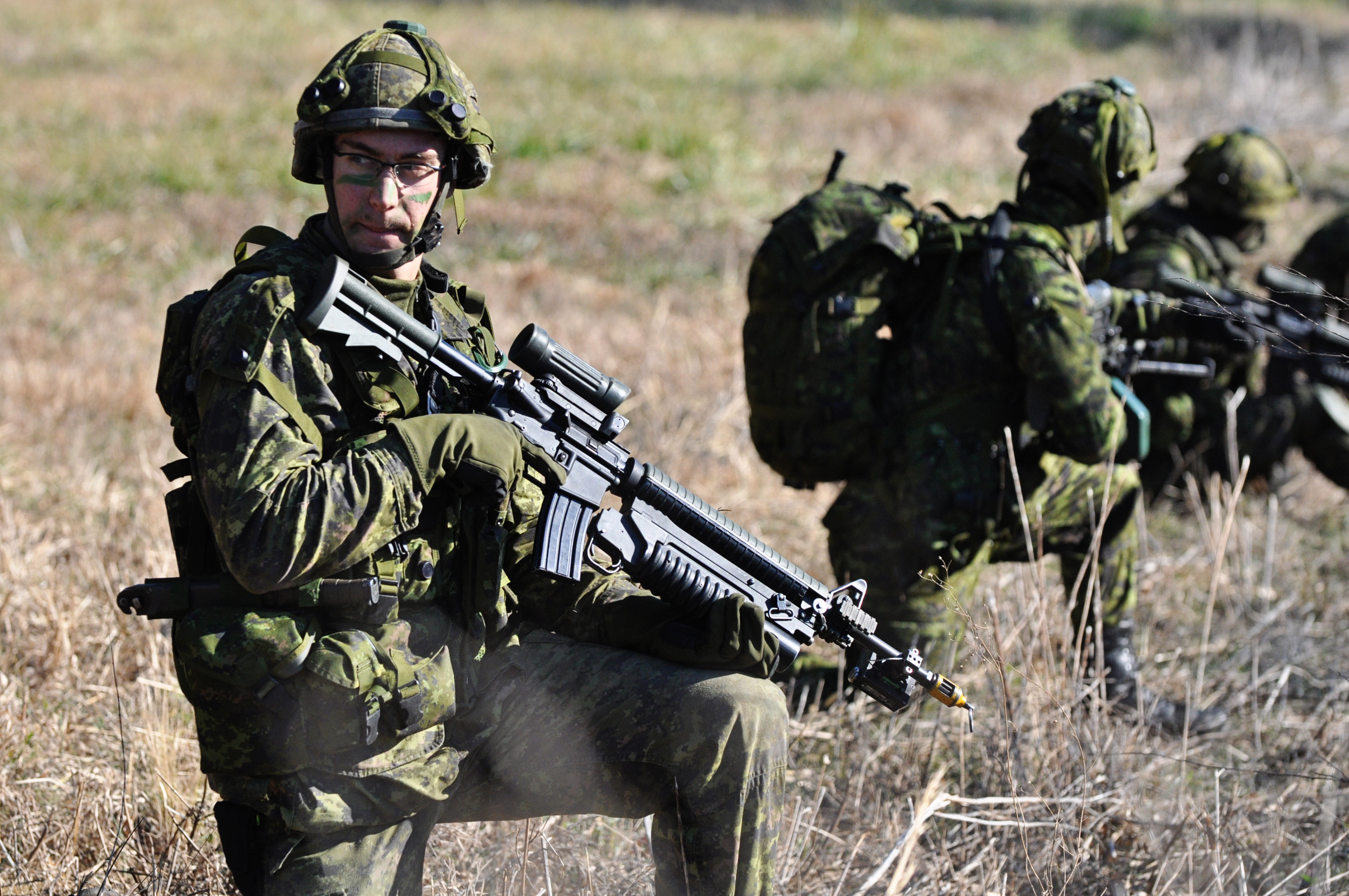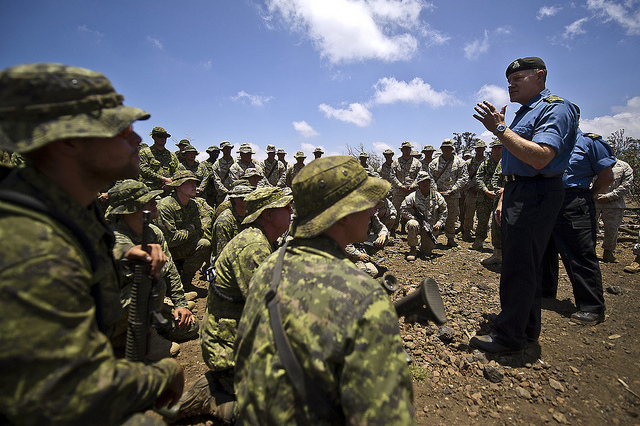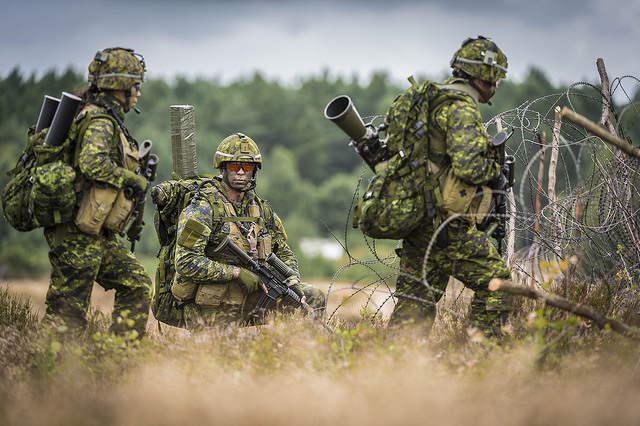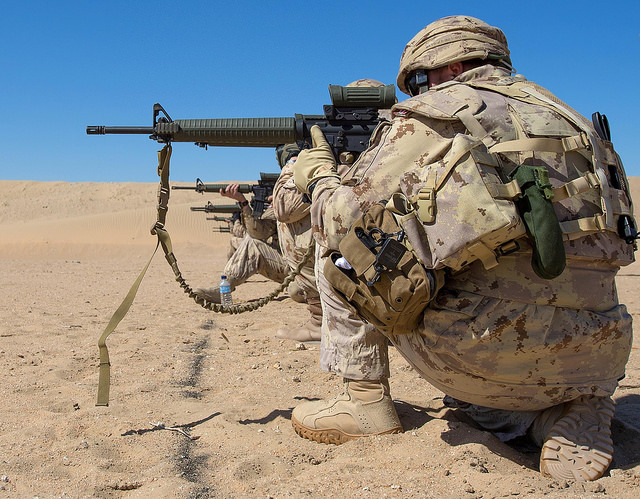Emerging from the war in Afghanistan, the Canadian Army Reserve (CAR) finds itself entering another period of challenges as the part-time component of Canada’s land force works to to fulfill its role within the Canadian Armed Forces. This spring saw an Auditor General’s Report that identifies under-manning and preparedness as alarming obstacles for the CAR. This timing has aligned with an ongoing Defence Policy Review, the Government’s recent announcement of a brigade being deployed to Latvia, and the possibility of a larger mission to Africa. For an organization well accustomed to “making do,” the Canadian Army Reserve will ultimately require greater backing from the Regular Army and Federal Government to achieve its mandate going forward.
Throughout Canada’s history, Reservists have demonstrated consistently their unique contribution during foreign and domestic operations. With strength of approximately 17,000 soldiers, the CAR comprises nearly half of the Army’s overall strength, making it an essential component to the Canadian Army’s ability to successfully conduct missions domestically and abroad.
The Auditor General’s Report notes that throughout the War in Afghanistan, the Army Reserve soldiers completed 4,642 deployments, totalling 16 of Canada’s 158 lost in combat and a further 75 wounded. Overall, Reservists comprised roughly 20% to 30% of Canadian forces deployed to theatre. One Canadian General in particular was quoted as saying “We couldn’t have done what we’ve done in Afghanistan without the reserves. We would have crashed and burned.” So why then is the Auditor General claiming the Army Reserve lacks direction and support from the Regular Army?
In the 2016 Report on the Army Reserve, the Audit Team noted that CAR units “lacked clear guidance on the training that is required for their key tasks.” The issue here becomes apparent when it is understood that the Army Reserve is expected to contribute 20% of the deployed force following the first rotation of Regular Force units into a theatre. The audit additionally identifies that “training courses for Army Reserve soldiers were not designed to provide all of the skills needed to quickly adapt to various types of combat situations.”
The report further noted, “that pre-deployment training of Army Reserve soldiers for international missions did not always address all known gaps in individual occupational skills training.” The Audit Team also identified the lack of integrated training conducted between the regular and reserves forces as a concern. This gap is known to diminish the quality of Reserve training and negatively impacts the synthesis between the co-dependent components of the Army.
The resulting deficiency in training means that at best, Reserve soldiers will ideally receive the deficient training during their pre-deployment period. However, as the report notes, it is not guaranteed this will happen and in many cases it does not. As well, by relying on the pre-deployment training to bring Reservists on par with Regular Force qualifications, the part-time component will ultimately have less experience with the required training resulting in a non-comparative proficiency.
In a recent National Post article, columnist Christie Blatchford blasted the Regular Force leadership of the CAF for its misappropriation of funding intended for the Reserves, and its deliberate mistreatment of the Reserves as a whole. Blatchford asserted that the Regular-Force leadership intentionally mismanaged the Reserves and their funding, for the purpose of self-preservation. In addition to these scathing allegations, Blatchford highlighted several key issues impacting the operational effectiveness of the CAR. The first issue she raised was the lack of essential equipment currently allocated to the Reserves, in particular the lack of unit-held radios.
In addition, she noted that units have been suffering from a debilitating shortage of vehicles and manpower. This is often the same equipment that they would be expected to use should they be called out in support of a domestic operation on short notice. The Army has stated that it needs Reservists to be able to help carry out the missions outlined in the 2008 Canada First Defence Strategy. However, given the current manpower of many units and equipment shortages, most units would likely struggle, or be entirely unable to provide meaningful assistance to these types of operations.
The Liberal Government’s recently announced Defence Policy Review has yet to offer any substantial insight into plans for the CAR in these early stages of the process. The announced renewal of Operation Reassurance and a Canadian brigade being deployed to Latvia will undoubtedly place added strain on the Army Reserve units to contribute forces. It can be hoped that deployments such as this will provide necessary opportunities for integrated training, however additional operations continue to draw on units, which in many cases are already critically short of manpower. Further support by the Regular Army, such as additional integrated training, would help to improve manpower shortages in the CAR by expediting qualifications. Additionally, streamlining the recruiting process would enable units to capitalize on new recruits quicker, before they become frustrated by the extensive delays regularly experienced in both recruiting and training.
Reservists possess a unique skill-set which they bring to the fight. However, the quality of what they bring can be dependent upon the Army’s ability to properly train and effectively incorporate them. Ultimately, they should be employed and trained in a manner that enables a commander to call upon reservists and not receive a second-rate soldier. To date, Reservists have proven their value, but to continue achieving this the CAR must be enabled to complete effective and relevant training and receive clear direction on the type of mission(s) they need to prepare for. If Canada and the Army want to maintain an Army Reserve, at a minimum, they need to be enabled with the capacity and cooperation to fulfill the mandate assigned to them.
Photo: Canadian Army reservists from the Montreal-based 34th Canadian Brigade Group and the Quebec City-based 35th Canadian Brigade Group “advance to contact” as part of their training during Exercise Noble Guerrier (Noble Warrior) 13 at Fort Pickett (2013), by Sgt. Terra C. Gatti, Virginia Guard Public Affairs via Combat Camera. Licensed under CC 2.0.
Disclaimer: Any views or opinions expressed in articles are solely those of the authors and do not necessarily represent the views of the NATO Association of Canada.




